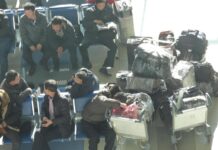The majority of major figures in the Party and state apparatus under Kim Jong Eun are Kim Il Sung University graduates, according to new research.
However, more interesting is the tendency toward Cabinet members being relatively younger than their Party colleagues, and another tendency for certain high officials to hail from northern regions of the country.
According to the analysis of 106 high officials, ‘Major Figures in the Party and Administration of the Kim Jong Eun System’, 35.5% of the 106 graduated from Kim Il Sung University, with a further 17.7% studying at Kim Il Sung Military University and 9.7% at Kim Chaek University of Technology.
Looking one level deeper, that means 40% of the Party leadership comes from Kim Il Sung University and 26% from Kim Il Sung Military University. Conversely, the Cabinet shows a far more specialist, technocratic bent, with just 29% graduating from Kim Il Sung University, 24% from Kim Chaek University of Technology and another 12% from a different institution, International Relations University. Military universities do not feature on the list of top schools.
In terms of age, the average for all 106 high-ranking state officials is 69. However, this again hides a more interesting trend; namely, that there is a ten year difference between Party and Cabinet: 72 for the former and 63 for the latter.
Place of birth is another source of interest. 18.6% of those in the research come from South Pyongan province (the most common region of origin overall) and 16.3% from Pyongyang. However, 16.3% also come from distant, rural North Hamkyung Province and a further 14.6% from industrial South Hamkyung Province, meaning that fully 30.9% come from two provinces relatively far from the national capital.
According to accounts given by defectors, the reason why such a disproportionate number of top leaders hail from the Hamkyung region (30.9%) is because many of the guerillas who fought against Japanes colonialism came from the area, and their influence continues to be handed down through the third generation.
Elsewhere, sex appears to be an even more powerful determinant than studying at Kim Il Sung University, with no fewer than 94.3% of the 106 figures being men.
In particular, within the Cabinet women hold no more than 2% of upper level positions. Compared to societies of a similar ideological hue such as China and Russia, this is a dreadful statistic; 11.5% of Chinese and 7% of Russian Cabinet members are female. Down in South Korea, women make up 11.1% of Cabinet ministers and 15.3% of National Assembly lawmakers.
Revealing the stats, an official with the Ministry of Unification explained today, “Since the Kim Il Sung and Kim Jong Il eras and in the current regime of Kim Jong Eun, absolute loyalty to the system is key in the formation of the Party, whereas Cabinet technocrats are appointed based on practical ability in their field.”

















